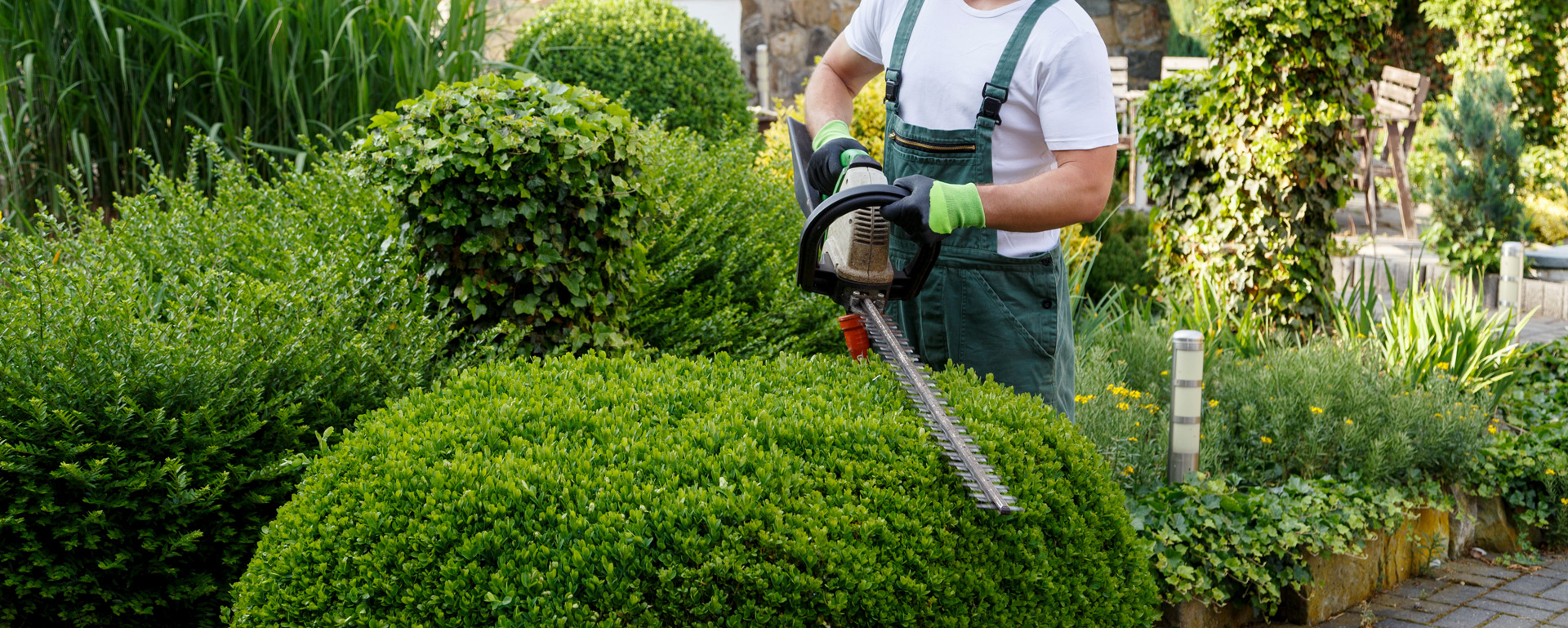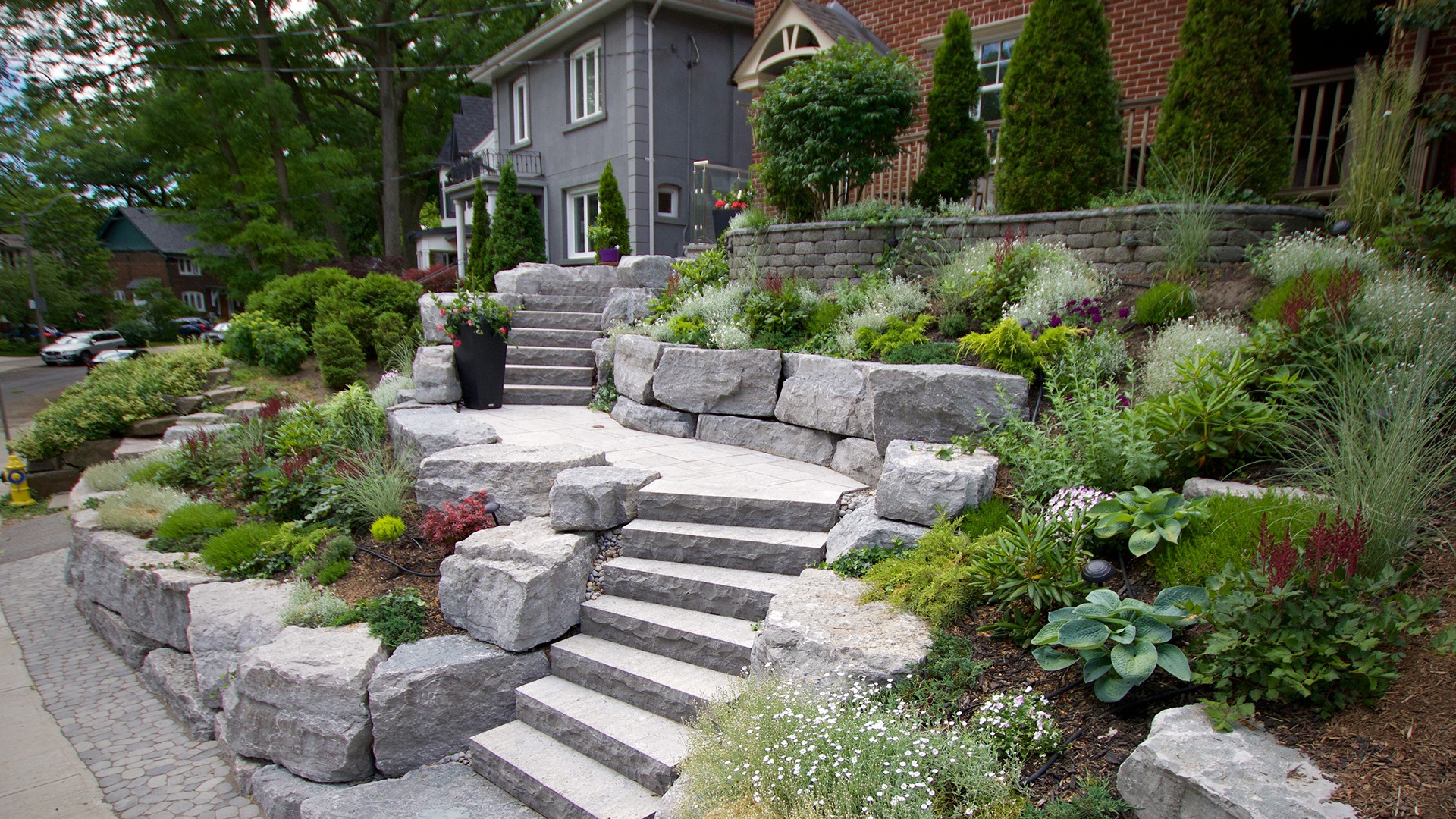Landscaping services for small yards: maximize every inch of space
Comprehending the Comprehensive Range of Functions in Professional Landscape Design Services
The comprehensive extent of professional landscaping services encompasses a selection of fundamental aspects - landscaping services. It consists of landscape style concepts, plant choice, and hardscaping functions. Additionally, it addresses watering systems and upkeep techniques. Each element plays an important duty in developing practical and cosmetically pleasing exterior areas. Understanding exactly how these parts collaborate can reveal much about the art and science of landscaping. Nonetheless, the journey right into this complex field is simply beginning
Landscape Design Concepts
Reliable landscape style principles are important for producing harmonious outdoor areas that improve both aesthetic allure and functionality (Learn More). These principles assist the arrangement of elements within the landscape, making sure a cohesive aesthetic experience. Trick elements include balance, which distributes aesthetic weight evenly; percentage, which relates the dimension of numerous components per various other and the area; and unity, which creates a feeling of wholeness via constant motifs and materials

Plant Option and Installation
In the domain of expert landscaping, plant choice and setup play a critical role in attaining a flourishing garden. Highlighting indigenous plant benefits, seasonal considerations, and the details dirt and sunshine requirements of each types guarantees a lasting and cosmetically pleasing landscape. Cautious planning in these areas not only enhances biodiversity yet additionally advertises long-term eco-friendly health.
Native Plant Advantages
Why should homeowners take into consideration native plants for their landscape design tasks? Native plants offer many benefits that improve both appearances and ecological sustainability. They are well-adapted to local environments, requiring less water and maintenance compared to non-native types. This resilience reduces the need for chemical fertilizers and pesticides, advertising a much healthier community. In addition, native plants give habitat and food for regional wildlife, including pollinators, which can enhance biodiversity in suburbs. Their experience with local soil and climate condition also results in far better development prices and durability. By choosing indigenous plants, property owners not only produce aesthetically attractive landscapes however likewise contribute to eco-friendly conservation, making a positive influence on their local atmosphere. Indigenous plants stand for a smart selection for landscape design jobs.
Seasonal Plant Considerations
Homeowners that have actually welcomed native plants in their landscaping can even more enhance their outdoor spaces by thinking about seasonal plant selections. By incorporating plants that thrive in specific periods, they can produce dynamic and aesthetically appealing landscapes throughout the year. Spring might introduce vivid blooms like tulips and daffodils, while summer season can showcase lavish foliage and colorful perennials. Autumn introduces a scheme of warm tones with goldenrods and asters, while winter can be accentuated with evergreens and ornamental grasses for texture. Specialist landscapers usually suggest selecting plants that not just enhance existing native species but likewise provide year-round passion and assistance regional wildlife. This thoughtful approach to seasonal plant choice guarantees a continually progressing and sustainable garden environment.
Dirt and Sunlight Demands
Successful landscaping depends upon recognizing the details soil and sunshine needs of plants. Various varieties prosper under differing conditions, needing a mindful assessment of both aspects during the selection process. Soil types, such as sandy, clay, or fertile, influence drainage, vitamins and mineral availability, and origin growth. In addition, pH levels can affect plant health and wellness, demanding dirt screening to ascertain suitability. Sunlight requirements differ significantly; some plants prosper in full sun, while others favor partial or complete color. A professional landscaper considers these aspects to guarantee peak development and visual allure. By aligning plant choices with the setting's particular characteristics, landscapes can achieve sustainability, resilience, and aesthetic consistency, eventually bring about effective plant establishment and long-term upkeep.
Hardscaping Features and Construction

While landscaping frequently stimulates pictures of lavish plant and lively flowers, hardscaping functions play an essential role in defining exterior rooms. These components, that include patio areas, sidewalks, preserving wall surfaces, and decorative stonework, provide structure and performance to lawns and gardens. Hardscaping utilizes materials such as concrete, brick, wood, and stone, allowing for varied layouts that complement the all-natural landscape.
The construction of hardscaping features requires careful planning and execution to assure durability and visual charm. Specialists evaluate site conditions, drainage, and spatial partnerships to produce cohesive outdoor atmospheres. Correct setup strategies are critical, as they protect against concerns like erosion and moving over time.
Including hardscaping not just improves the aesthetic passion of a residential property yet additionally facilitates outside activities, making it an essential facet of detailed landscaping services. Ultimately, thoughtful hardscaping adds to both the capability and elegance of exterior get more info areas.
Watering Systems and Water Management
Reliable watering systems and water monitoring are essential elements of expert landscaping, as they guarantee that plants get the required hydration for suitable development. These systems can differ from simple drip watering configurations to advanced automated lawn sprinkler systems, created to satisfy the particular requirements of diverse landscapes. Correct water administration not only maximizes water use, reducing waste, but likewise improves plant wellness and reduces disease risks.
Landscape design specialists evaluate different factors, consisting of soil type, plant species, and neighborhood climate, to create customized watering remedies. Furthermore, including rainwater harvesting methods can additionally improve sustainability and effectiveness. Routine maintenance of irrigation systems is necessary to keep functionality and protect against leaks, which can cause water loss and boosted costs (Learn More). Eventually, a properly designed irrigation system plays a critical role in maintaining the visual allure of outside spaces while advertising eco-friendly stewardship within specialist landscaping techniques
Yard Care and Upkeep Strategies
Grass treatment and upkeep methods are essential for accomplishing a lavish, healthy lawn that improves the overall landscape. These approaches encompass different practices intended at advertising ideal growth and visual appeal. Routine mowing is important, as it encourages thick, also development while stopping weeds from establishing. Furthermore, proper fertilization gives needed nutrients, with applications customized to the specific lawn kind and soil problems.
Watering methods should concentrate on deep, infrequent irrigation to urge origin growth, while aeration enhances soil structure and promotes nutrient absorption. Parasite and condition management is also critical; determining concerns early permits effective treatments that minimize damage.
Ultimately, overseeding can invigorate slim or broken grass, enhancing thickness and color. By applying these targeted grass treatment methods, landscape design specialists can assure that backyards remain dynamic and healthy throughout the seasons, substantially adding to the total beauty of the residential property
Seasonal Landscape Treatment and Upkeep
As the seasons modification, correct landscape care becomes crucial for keeping the health and charm of exterior rooms. Each period presents one-of-a-kind obstacles and requirements. In springtime, landscape experts concentrate on trimming, planting, and feeding to encourage development. Summer season demands regular watering, weed control, and bug monitoring to secure newly developed plants.

Throughout the year, seasonal landscape upkeep guarantees that exterior locations stay aesthetically appealing and healthy and balanced. Expert services can provide tailored maintenance plans that adapt to the specific needs of each season, allowing property owners to take pleasure in vibrant landscapes year-round. Overall, seasonal care is an essential element of specialist landscaping that advertises longevity and visual worth.

Sustainable Landscaping Practices
An expanding number of homeowner are welcoming lasting landscape design practices to produce eco-friendly outdoor spaces. These methods concentrate on saving sources, enhancing biodiversity, and reducing environmental influence. Native plants are often selected for their low water demands and compatibility with local environments, minimizing the requirement for chemical plant foods and pesticides. Rainfall yards and absorptive paving are employed to handle stormwater overflow, promoting groundwater recharge and decreasing disintegration.
Furthermore, sustainable landscaping incorporates natural horticulture strategies that focus on soil health and wellness and promote natural parasite control. Efficient irrigation systems, such as drip watering and rain harvesting, assistance enhance water usage. In addition, landscape designers increasingly support for the usage of recycled products, such as reclaimed wood and stones, to lessen waste. By adopting these lasting practices, homeowner not only add to ecological conservation however also produce cosmetically pleasing environments that can love minimal upkeep.
Regularly Asked Concerns
For how long Does a Landscape Design Task Generally Require To Full?
Normally, a landscape design job can take anywhere from a couple of days to numerous weeks to complete, relying on the job's size, complexity, and layout needs. Elements such as weather and resource accessibility also affect timelines.
What Variables Impact the Expense of Landscape Design Services?
Different factors influence landscaping solution costs, including project size, style intricacy, material quality, labor costs, geographic place, and seasonal demand. Each component contributes uniquely to the total economic demands of a landscape design job.
Are Landscape Design Solutions Available Year-Round?
Landscaping services are generally offered year-round, although accessibility might differ based on area, seasonal climate conditions, and details service offerings. Some services might be limited throughout severe climate or off-peak periods.
Do Landscaping Business Offer Service Warranties on Their Work?
Lots of landscaping companies do offer warranties on their work, which can differ in length and insurance coverage. Customers are encouraged to make inquiries about specific terms, guaranteeing they recognize what is ensured and any conditions that use.
Can I Layout My Landscape Without Specialist Aid?
Yes, individuals can develop their landscapes without expert aid. Nevertheless, they might do not have expertise in plant option, layout, and environmental factors to consider, potentially leading to much less effective layouts that can require pricey changes later.
In the domain of specialist landscape design, plant choice and installation play an important duty in accomplishing a growing yard. House owners that have actually welcomed native plants in their landscaping can further boost their outdoor areas by considering seasonal plant options. Effective landscape design pivots on comprehending the particular soil and sunlight requirements of plants. Reliable irrigation systems and water monitoring are essential elements of professional landscape design, as they guarantee that plants receive the needed hydration for suitable development. Landscaping professionals examine numerous aspects, including soil kind, plant species, and regional climate, to establish customized watering options.